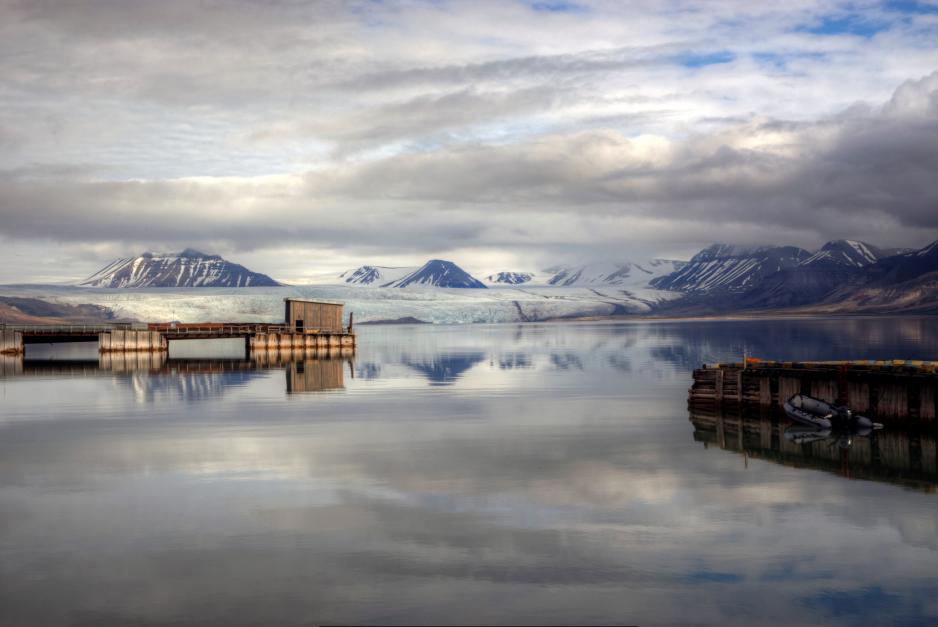Pollutants have significant effect on climate change in the Arctic

Clouds over Pyramiden, Svalbard (Photo: Mariusz Kluzniak)
Pollution alters the previously underrated effects of clouds on climate change in the Arctic. In Greenland, clouds contribute to the melting of the ice sheet and lead to high societal costs.
Pollution alters the previously underrated effects of clouds on climate change in the Arctic. In Greenland, clouds contribute to the melting of the ice sheet and lead to high societal costs.
"An important focus of our session this year has been the sensitivity of clouds and precipitation to various aerosols (a suspension of fine solid particles or liquid droplets in air or another gas), including also polluting aerosols from anthropogenic sources, which modify cloud properties and how they affect the climate", explains Irina Gorodetskaya of the University of Aveiro and a convener of the European Geophysical Union (EGU) session on polar clouds and precipitation to HNN. The local sources of aerosols in the Arctic stem from biological activity, such as phytoplankton, but many sources are further away. Gorodetskaya points to the long-range transport of pollutants originating for instance in Europe, Asia, the U.S., and Canada.
Clouds are sensitive to what happens in the industrialized world in the mid-latitudes. Pollutants significantly change the system: they modify the amount of ice and liquid in the clouds and with it how much they warm or cool as well as the amount and type of precipitation.Lopsided energy balance
Gorodetskaya elucidates: "Clouds reflect solar radiation. This means that they cool the Earth’s surface, but they can also act as a blanket. They absorb the terrestrial radiation emitted by the surface and send it back." Jordi Cristóbal of Asiaq – Greenland Survey and the University of Alaska Fairbanks adds: "Clouds play a large role in the earth energy balance between the energy getting to the earth surface (solar) and being emitted (terrestrial). Without humans and climate change it would be stable, but right now it’s very unbalanced." He presented an interdisciplinary project aimed at understanding the Arctic ecosystem response at Disko, Greenland, at the EGU.
Different projects researching these processes were presented at the annual meeting of the EGU in Vienna, Austria. Their foci range from the impact of local marine sources on cloud properties, to the contribution of clouds and mid-latitude aerosol emissions to the Arctic climate and Greenland’s surface melt.
The "hidden jewels" of the hydrological cycle
Clouds might be the "hidden jewels" of the hydrological cycle, Gorodetskaya argues. They play a crucial part and are sensitive indicators of change. In the Arctic, clouds warm the surface more than they cool it. "We are modifying the water cycle and clouds are in the middle of the system," she emphasizes. Clouds are the key drivers in the feedback loops which lead to the so-called Arctic amplification, where the temperature increase is much greater compared to the planetary change.
Arctic not "pristine" anymore
During the EGU session on ‘clouds and precipitation in the Polar Regions’, Heike Wex of the Leibniz Institute for Tropospheric Research posit that in contrast to the Antarctic, the Arctic is not pristine anymore, as an unexpected high level of aerosols was found.
Maximilian Maahn of the University of Colorado Boulder showed how local, anthropogenic pollution from the Prudhoe Bay oilfield in Alaska leads to a change of cloud properties in that region. This is one of the reasons why observations and data from Arctic regions are crucial to understand the global circulation of pollutants and their effects on the climate.
High societal costs of the Greenland melt
The clouds also significantly contribute to the melt of the Greenland ice sheet, including the big melting event in 2012, as Gorodetskaya and Cristóbal confirm. "In Greenland and elsewhere, there is an acceleration of the hydrological cycle. More freshwater flows into the oceans, which changes their salinity and has multiple effects on the people living on the coasts," Cristóbal states.
The project he works is led by Asiaq - Greenland Survey in cooperation with the Greenland Ecosystem and Monitoring program, the University of Copenhagen, Aarhus University, the University of Alaska Fairbanks the US Department of Agriculture and NASA. It focuses on Disko Bay, where roughly 20% of Greenland’s population lives.
Because the melting changes the vegetation, on which caribou migrations depend, it also affects their annual migration cycles and therefore hunting activities. The effect is also felt in Greenland’s main industry, fisheries, because changes in salinity disturb fish populations and their movements.
The societal impacts are therefore high. Cristóbal explains to HNN: "The local population is used to traditional ways of fishing and hunting and they might not have resources to move."
With the people, for the people
In the future, Cristóbal and his team would like to involve the local population and integrate their knowledge and observations, such as changes in the vegetation. There could also be cooperation in the framework of a project examining the effects on fisheries.
However, the great knowledge and expertise locals have on changes directly related to the climate and weather is harder to integrate into the study. Cristóbalsays: "People remember extreme weather events very well, but it’s hard to transfer this information into modelling".
The team also envisages collaboration with social scientists in order to study and mitigate the effects of climate change on the population.
Long-term vision
"The program started in 2016, but it took a lot of time to set up the instruments," acknowledges Cristóbal. The program is planned in the long-term and might last for 20 or 30 years or as long as there is still a need for more data.
